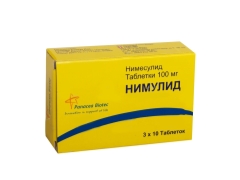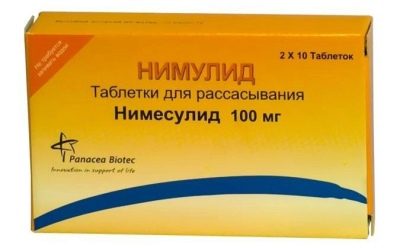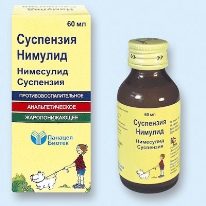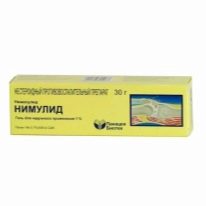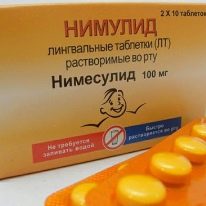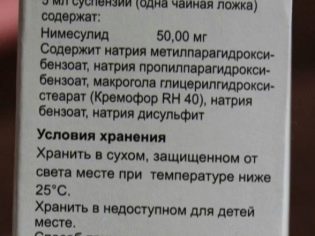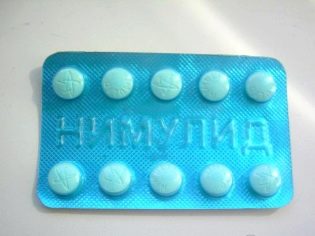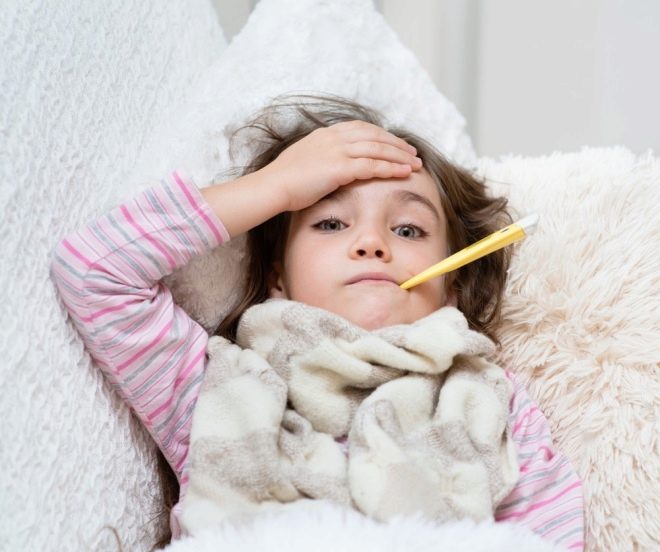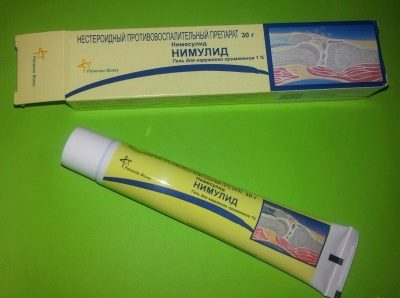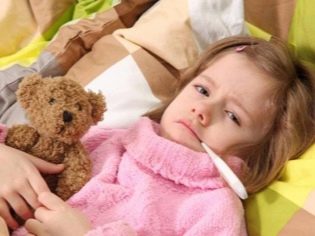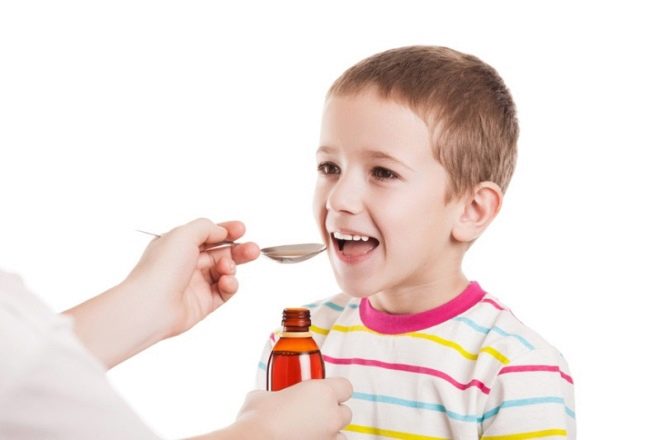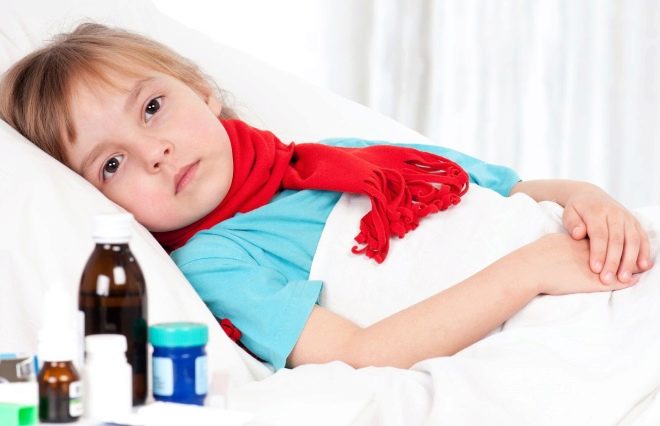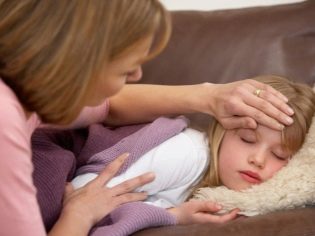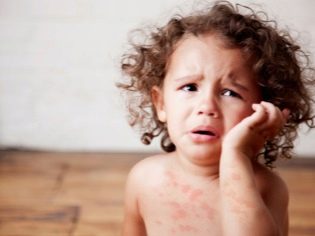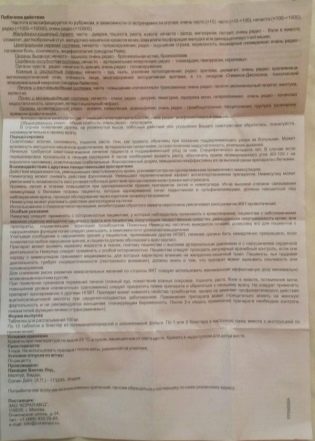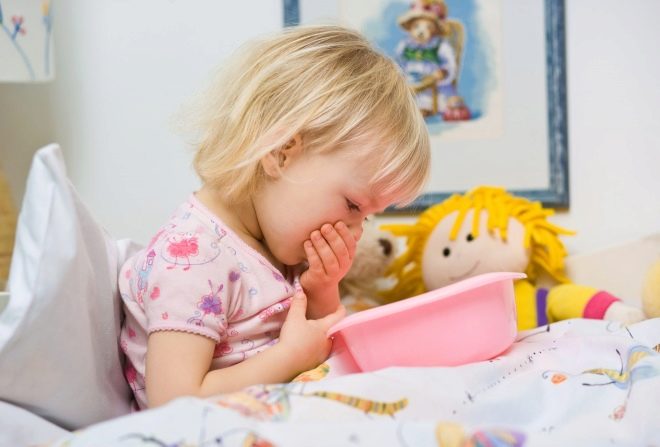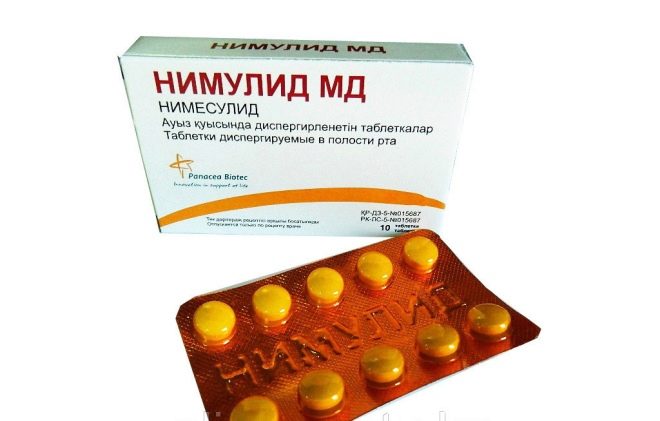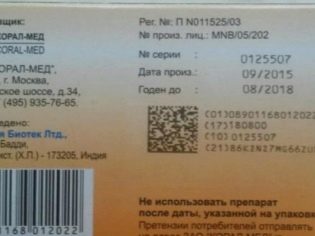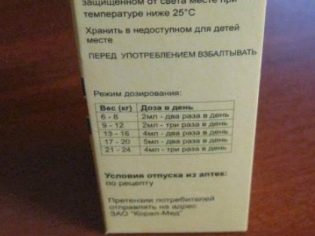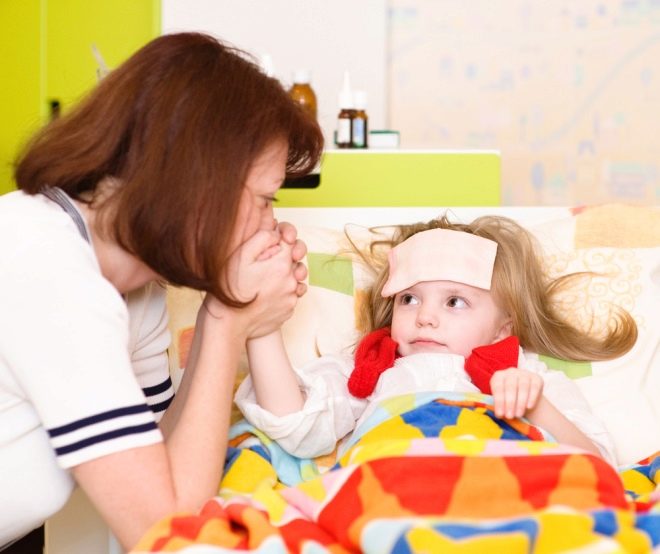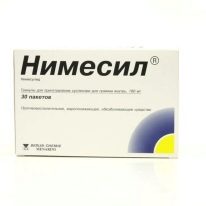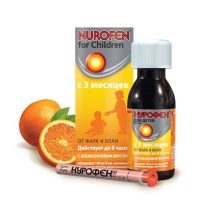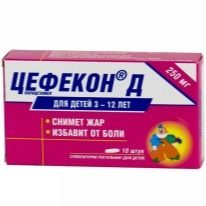Nimulid for children
Nimulid is one of the preparations of a large group of anti-inflammatory nonsteroidal drugs, so it helps with inflammation, pain, or high temperature. Not everyone knows from what age “Nimulid” is prescribed for children, in what dose it is prescribed in childhood, and if it is dangerous for a child’s body.
Release form
The medicine is produced by the Indian company “Panacea Biotech” in four different forms:
- Suspension. This “Nimulide” is most often chosen for children, since it is represented by a sweet yellow liquid with a pleasant smell. It is placed in a 60 ml plastic or brown glass bottle. Each bottle is accompanied by instructions, as well as a measuring cup.
- Gel. This version of the drug is a translucent mass with a yellowish tint, packed in plastic or aluminum tubes of 10, 20 or 30 g each.
- Tablets that need to be absorbed. They have a pale yellow hue, a sweet orange flavor and a round shape. Such "Nimulid" is packed in blisters of 10 tablets, and in one box - 1 or 2 blisters.
- TAbletki that should be swallowed. They are also light yellow and round, but marked with a logo on one side and the word “Nimulid” on the other. One pack contains 30 or 100 such tablets, placed in blisters of 10 pieces.
Composition
The active substance in each form of Nimulide is nimesulide. Its amount in 5 ml of suspension is 50 mg, in each tablet (both for oral administration and for resorption) - 100 mg, and in 1 gram of gel - 10 mg. Auxiliary ingredients of the drug are:
- In suspension - sucrose, glycerol, water, yellow dye, sorbitol, xanthan gum, sodium benzoate, mango and vanilla additives for taste and other ingredients.
- The tablets for ingestion are lactose, corn starch, polysorbate, povidone, and other compounds.
- In tablets for sucking - aspartame, croscarmellose sodium, orange flavoring, mannitol, potassium sorbate and other substances.
- The gel contains triacetin, phosphoric acid, ethyl alcohol, aromatic additives, hyprolosis, and some other compounds.
Operating principle
“Nimulida” has analgesic and anti-inflammatory effects, as well as antipyretic effect. Such drug actions are associated with the ability of nimesulide to inhibit cyclooxygenase-2. This leads to a blockage of prostaglandin synthesis. Since these substances are responsible for the inflammatory response, fever and pain, the use of Nimulida will affect all these processes.
When compared with other drugs from the group of nonsteroidal anti-inflammatory drugs, it can be noted that nimesulide affects cyclooxygenase-1 less, so the drug does not inhibit the formation of prostaglandins in healthy cells, and affects the synthesis of such substances only at the site of inflammation.
The ingested "Nimulide" is very well absorbed, and then combines mainly with plasma proteins. Metabolic changes of the drug occur in the cells of the liver, and the excretion is carried out both with urine and bile.
With local use of the gel, the agent acts only on the treated area (this form enters the bloodstream in extremely small doses), as a result of which the pain subsides or disappears.If such “Nimulid” is applied to the joint, then this will help get rid of the swelling and constraint of movements.
Indications
Most often, Nimulid tablets and suspensions are discharged:
- With various diseases of the joints and bursitis, as well as with inflammation of the tendons and ligaments (including the inflammatory process due to their injury).
- With inflammation and pain due to surgery.
- When headache or toothache.
- With fever and pain caused by angina, bronchitis and other respiratory diseases.
- With pain in the muscles.
The gel is used for myalgia, arthritis, lumbago, bursitis, sprains, bruises, tendon injuries and other pathologies that require anesthetic and anti-inflammatory effects.
Are children prescribed?
All forms of Nimulide are contraindicated for children under 2 years old. A two-year-old child can be given the drug in the form of a suspension, but only after consulting a doctor. The use of the gel is allowed for children over 7 years. The tablet form of the drug is not prescribed until the age of 12, as well as children who weigh less than 40 kg.
Contraindications
"Nimulid" do not write out:
- Children with gastrointestinal ulcer with exacerbation, as well as with bleeding in the stomach or intestines.
- Patients with liver failure.
- Babies with serious kidney problems.
- Children who have an intolerance to nimesulide or other anti-inflammatory drugs.
- Patients with impaired blood coagulation.
- Children with severe heart failure.
- With high levels of potassium in the blood.
The presence of diabetes and other serious diseases in a child requires the close attention of a doctor during treatment with Nimulide.
Gel should not be lubricated mucous membranes, as well as the skin with injuries or infected areas. Covering the treated area with a bandage is not recommended.
Side effects:
- The digestive system of a child may respond to treatment with Nimulide with stomach pains, nausea, heartburn, and tar-like stools.
- In rare cases, the drug causes drowsiness, dizziness, shortness of breath, anemia, edema, oliguria, or headaches.
- In some patients, the medication causes a skin rash, erythema or other allergic reaction.
- When using the gel, such adverse reactions are possible as a temporary change in skin color, rash, peeling or itching.
Instructions for use
So, the moments to which attention should be paid:
- “Nimulide” in suspension is given to the child after eating or at the end of meals to eliminate the harmful effects of the drug on the stomach. If necessary, the product can be washed down with clean water.
- A single dose of the drug for children must be calculated by weight. The medication is given at the rate of 1.5 mg of nimesulide per 1 kg of body weight of a small patient. For the convenience of dosing the suspension, there is a table of single doses for children with different weights on the cardboard packaging and in the annotations to this form of Nimulida. For example, a two-year-old baby who weighs 11 kg is given 1.5 ml of suspension per reception.
- The frequency of use "Nimulida" is 2 or 3 times a day. It is determined by the doctor, taking into account the course of the disease and the reaction of the child’s body to treatment.
- The maximum amount of nimesulide per day for a child is 5 mg per kilogram of its weight. For example, a child weighing 20 kg is given a maximum of 100 mg of the active ingredient - no more than 10 ml of suspension per day.
- If a child weighs more than 40 kg, the dose of the suspension is not calculated for it. This patient is given a sweet medicine in an adult dosage - 10 ml each morning and evening (single dose - 100 mg).
- Tablets "Nimulid" for children over 12 years old weighing more than 40 kg are given twice a day, 100 mg each - one tablet per reception. The drug is advised to take after a meal, drinking plenty of water or dissolving in the mouth.
- The drug in the form of a gel is applied to the affected area and gently spread evenly, but not rubbed into the skin. Wash hands thoroughly after handling.The amount of gel for one application and the frequency of application is determined individually, but usually with such “Nimulid” painful and inflamed areas are lubricated no more than 4 times a day and no longer than 10 days.
Overdose
Too large a dose of any of the Nimulide forms taken inside can lead to vomiting, drowsiness, apathetic condition, nausea. With a significant overdose, bleeding from the wall of the stomach often begins, blood pressure rises, renal failure develops, and respiration is inhibited.
There is no special antidote that eliminates the therapeutic effects of nimesulide; therefore, children are prescribed symptomatic therapy. If no more than 4 hours have passed after an overdose, the patient is vomited and then given an osmotic laxative and a sorbent. Since the drug binds to proteins, hemodialysis is not used.
An overdose of the gel is possible only when applying the drug on a very large area of skin, which is extremely rare. In such a situation, you should immediately consult a doctor.
Interaction with other drugs
In the treatment with Nimulid one should not be given many other medications, among which are anticoagulants, glucocorticoid hormones, diuretics, hypoglycemic agents and other medicines. If the child is taking any drugs, before using Nimulide, their compatibility should be checked with the pediatrician and in the abstract.
Terms of sale
Gel "Nimulid" can be freely purchased at the pharmacy as a non-prescription agent. The remaining forms of medication are sold only by prescription. The average price of 10 lozenges is 120-130 rubles, for a bottle of suspension in different pharmacies you need to pay from 150 to 230 rubles, and a gel tube weighing 30 g costs about 230-250 rubles.
Shelf life and storage features
Any form of Nimulide is recommended to be kept at home in a place hidden from moisture and sun rays - at room temperature. The drug should be placed where children can not get it. The shelf life of conventional tablets is 5 years, and in other forms - 3 years. If it has expired, the use of drugs for children is unacceptable.
Reviews
About the treatment of children "Nimulid" you can find a large number of positive reviews, in which mothers call the medicine effective and confirm that its use quickly reduces the heat and helps to get rid of pain. The drug in the form of a suspension is praised for the convenience of dosing and a pleasant taste.
Doctors also speak about this medication mostly well. "Nimesulide»Banned in Europe (for the treatment of children under 12 years of age) in any form due to the high risk of liver damage. However, domestic pediatricians note the low incidence of side effects from Nimulid and prescribe the drug to young patients when other antipyretic drugs based on paracetamol or ibuprofen do not work.
Komarovsky says the following: in order to avoid a harmful effect on a child’s body, the temperature must first be reduced with ibuprofen or paracetamol preparations. "Nimulid" should be given only if they are ineffective. The dosage must be selected individually, starting treatment with a smaller amount of suspension than recommended in the table on its packaging.
As for the minuses of Nimulida, in some children the drug causes allergies (according to statistics in 2-5% of patients), but it is often associated with chemical additives in the composition of the suspension.
Analogs
Instead of "Nimulida" may be prescribed other drugs, the effect of which is provided by nimesulide - "Nise", "Nimesil"," Nemuleks ","Nimesulide"," Nimesan "," Aponil " and other medicines. They are presented in various forms, including gel, dissolving tablets and granules for suspension, therefore they can replace any of the “Nimulide” variants.
However, in the treatment of children (especially with fever), pediatricians prefer anti-inflammatory drugs containing ibuprofen or paracetamol.These analogs are considered the safest in childhood. Instead of "Nimulida" the child is better to give "Nurofen", "Efferalgan», «Calpol"," Next " and similar drugs.
For the little ones, these drugs are released in candle light - eg, «Cefecone D» or Panadol. They effectively reduce the temperature of the flu, chickenpox, pneumonia and other diseases, and also help eliminate pain in the ear, muscles, joints, throat, gums and other places.
Visually about analogs of Nimulid you can look in the following video.
